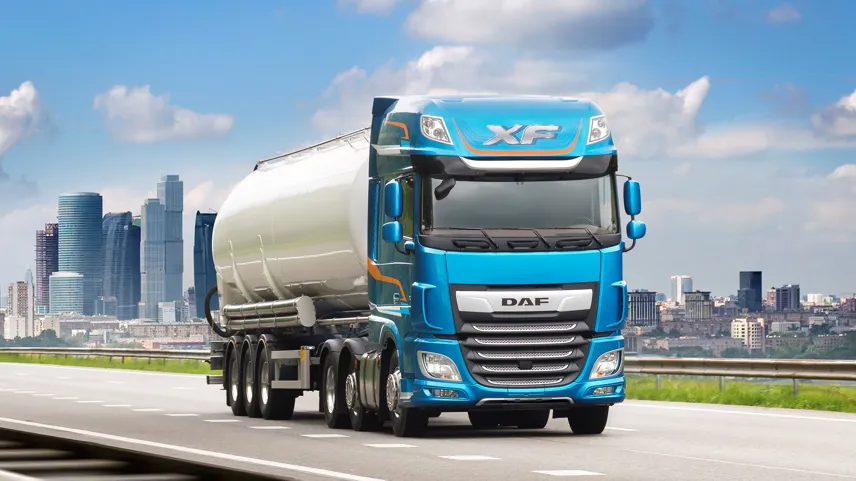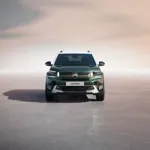Review
When it comes to describing a typical UK fleet tractor unit, I suspect many people would mention the Daf CF. It offers a good balance between, power, cab and total life costs. Equally impressive in this area is the XF being tested here which appeals to customers wishing for a larger type cab for longer fleet haul operations .
Once the decision on the type of cab has been made, the choice doesn’t get any easier as the XF range has a mixture of rigids and tractor units. In fact, there are six choices of three axle tractors, with five of these as 6x2s.
In 2019, the market for tractor units rose by 12.6% compared with 2018, as 22,191 models joined UK roads and the popular three axle artics increased their share by 14.5%.
In fact, the tractor market remained by far the most popular segment taking 44.6% of the total heavy truck market above six tonnes gross vehicle/ combination weight, with demand growing 12.9% compared with 2018.
Two axle tractors are outnumbered by three axle units by almost 10 to one and, as mentioned, Daf has five models in the 6x2 axle combination with a mixture of tag, mid-lift and steered, with perhaps the most popular the 6x2 air suspended FTP model.
The FTP choice is not just limited to axle configurations but also the major driveline items with four power ratings encompassing two engine types, and three gearbox offerings as well a couple of variations on the axle loadings.
Power options include Paccar’s own Euro VI MX-11, which delivers up to 440PS, and the MX-13, which starts at 430PS but rises to 485PS (tested here) and tops out at 533PS, the higher end of the UK cab sector.
Behind the MX engines is a mix of gearbox options, with the TraXon 12-speed considered as the UK standard for many of the UK’s national general haulage requirements but there is the option of a TraXon 16-speed and also a 16-speed manual.
As explained, the FTP version is a 6x2 configuration.The front axle is rated at eight tonnes with options either side of this (7.5 and nine tonnes) with the second lift axle having a rating of just 4.4 tonnes on 235/75R17.5 tyres. Finally, the drive axle is a more standard 11.5 tonnes. This combination results in the gross vehicle weight of the FTP to be rated at 23,900kgs and a rear bogie weight of 15,900kgs.
As far as the chassis is concerned there are two wheelbase variants, a 3.85m and 4.05m when measured from the centreline of the front axle to the centreline of the rear (Axle 3). There is a standard rear bogie spread of 1.1m on both.
The Paccar MX engine features a three-stage engine braking system (a ZF intrader is available as an option), ventilated disc brakes are on both front and rear axles, and, of course, there’s the normal array of electronic braking features such as EBS, EBA and EBS as well as lane departure warning and vehicle stability control (VSC).
The XF tractor range has two cabs available, the Space cab sleeper and the top of the range Super Space cab. Both are 2,490mm wide and have LED daytime running lights as well as galvanised steel bumper, tinted glass, main/wide angle controlled and heated along with electrically windows.
The cab interior trim colour is officially called dark sand and basically converts to a beige colour complimented by black infill and also a generous amount of wood-style trim. The driver’s seat is air suspended although the passenger seat is fixed and there’s a single bunk to the rear with a second optional. Climate control and an auxiliary cab heater (water) takes care of the cab temperature and there’s a manually controlled aluminium roof hatch.
Once seated, the dash is a great mixture of analogue and digital, with the central instrument panel having a speedo to the left and colour indicated rev counter on the right. To the left of the panel is a LCD screen with the sat-nav and infotainment system and a conveniently placed park braking lever in between, beyond that are three rows of rocker switches. Underneath these switches is the climate control system and the main “drive” system for the automated gearbox just by its side.
Starting the XF is the traditional way of turning the key, no fancy start/stop button etc, and firing up the 480bhp engine brings the vehicle to life, turning the switch to “D” for drive and releasing the park brake starts the 44-tonne off on the road. We cover a mixture of motorways and dual carriageways along the Oxfordshire and Buckinghamshire border, typical XF territory!
The XF is probably one of the most familiar cab types on UK roads, and is a consistent winner of many truck awards. As you climb inside the Space cab the semi wrapround dashboard really makes you feel welcome, in fact the dash is more of a full wrapround and that’s a plus. Obviously long-haul type cabs don’t necessarily need the driver to have cross cab access other than for the overnight stay and obligatory rest periods.
The XF features an array of advanced driver assist systems including an eco mode driver scoring system. My driving guru, Mandy Wannerton from DAF Trucks, suggested we complete two circuits, one without coaching and one with and using all the driver assist systems. The difference is amazing with a double-digit potential saving in fuel.
Perhaps the most important point is that using the driver assist aids not only helps the fuel economy but also concentration therefore adding to the safety of the vehicle.
The XF has been the tractor “stalwart” for DAF over many years and many guises and will continue to maintain its high presence in the UK truck sector.
















